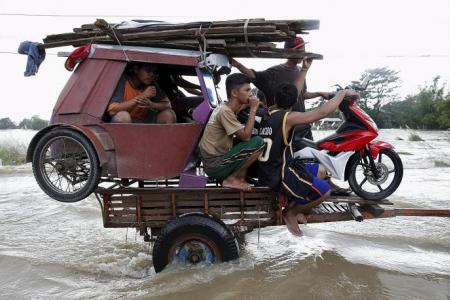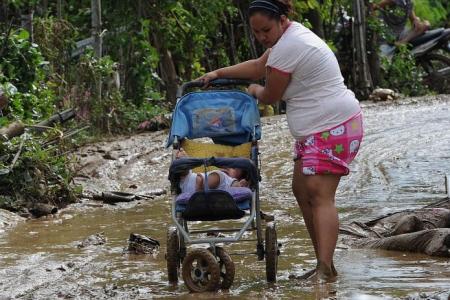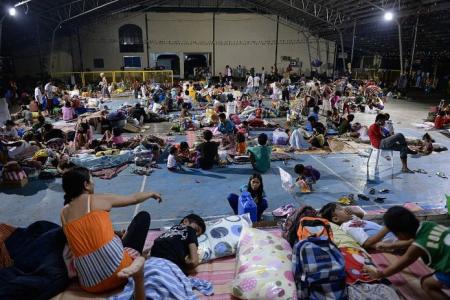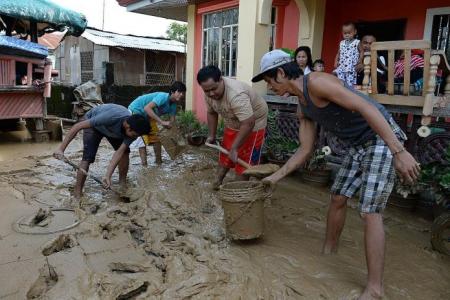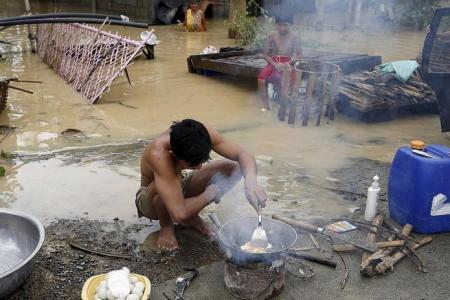Thousands of kids at risk of hunger, disease
Widespread flooding in Philippines in wake of Typhoon Koppu
Thousands of Filipino children are at risk after Typhoon Koppu cut a swath of destruction through the Philippines.
Save the Children Philippines country director Ned Olney said in a statement that he is "very concerned about their safety..." reported the Philippine Star.
"We expect that the worst affected families will face prolonged stay in evacuation centres, and this raises our concern, considering such spaces are usually unsuitable for vulnerable children to live in for an extended period of time because of limited hygiene and sanitation facilities," Mr Olney said.
The organisation is preparing 1,000 relief kits for dispatch to some of the worst affected areas in Aurora province, where Typhoon Koppu made landfall, the Philippine Star reported.
Children stranded in remote areas are also a concern said the United Nations Children's Fund (Unicef). It has appealed for US$2.8 million (S$3.9 million) to replenish its supplies.
"Unicef's first priority is to ensure children are safe and protected. Following a typhoon, children face risks from contaminated water sources, lack of food, epidemics such as cholera, hypothermia, diarrhoea and pneumonia," Unicef's Philippines Representative Lotta Sylwander said.
While widespread flooding eased yesterday, the death toll climbed to 47, reported AFP.
As the weather improved three days after the onslaught of Typhoon Koppu, officials were also counting the cost of ruined crops and drowned livestock from heavy rain that flowed into vast farming regions north of Manila.
AFTERMATH
"Although the water is still flowing downstream, it has started to subside in some areas," Mr Mahar Lagmay, director of a government project to mitigate the impact of natural disasters in the Philippines, told AFP.
More than 300 villages had been submerged across the central farming regions of Luzon on Monday and Tuesday.
But the flooding had not subsided completely yet, forcing more than 107,000 people to remain in evacuation centres.
The state weather service said the typhoon melted into a tropical depression off Luzon's north coast early yesterday with winds of 55kmh.
When it first struck the east coast of Luzon on Sunday morning, its gusts were 210kmh, making it the second strongest storm to hit the Philippines this year.
The Philippine islands are often the first major landmass to be hit by storms that emerge over the Pacific Ocean. The South-east Asian archipelago endures about 20 major storms each year, many of them deadly.
The most powerful storm ever recorded on land, Super Typhoon Haiyan, hit the central Philippines in 2013, leaving at least 7,350 people dead or missing.
Get The New Paper on your phone with the free TNP app. Download from the Apple App Store or Google Play Store now

